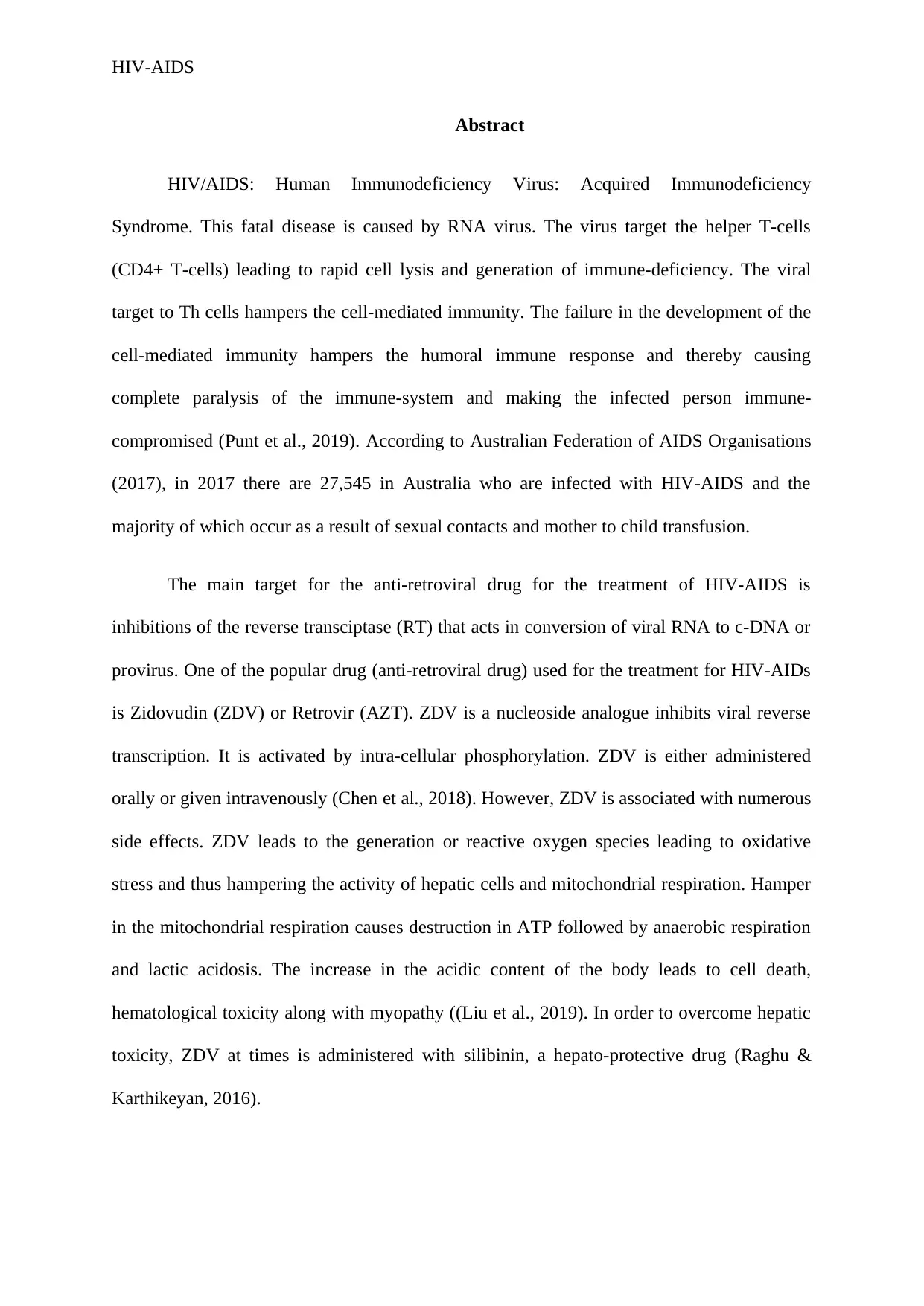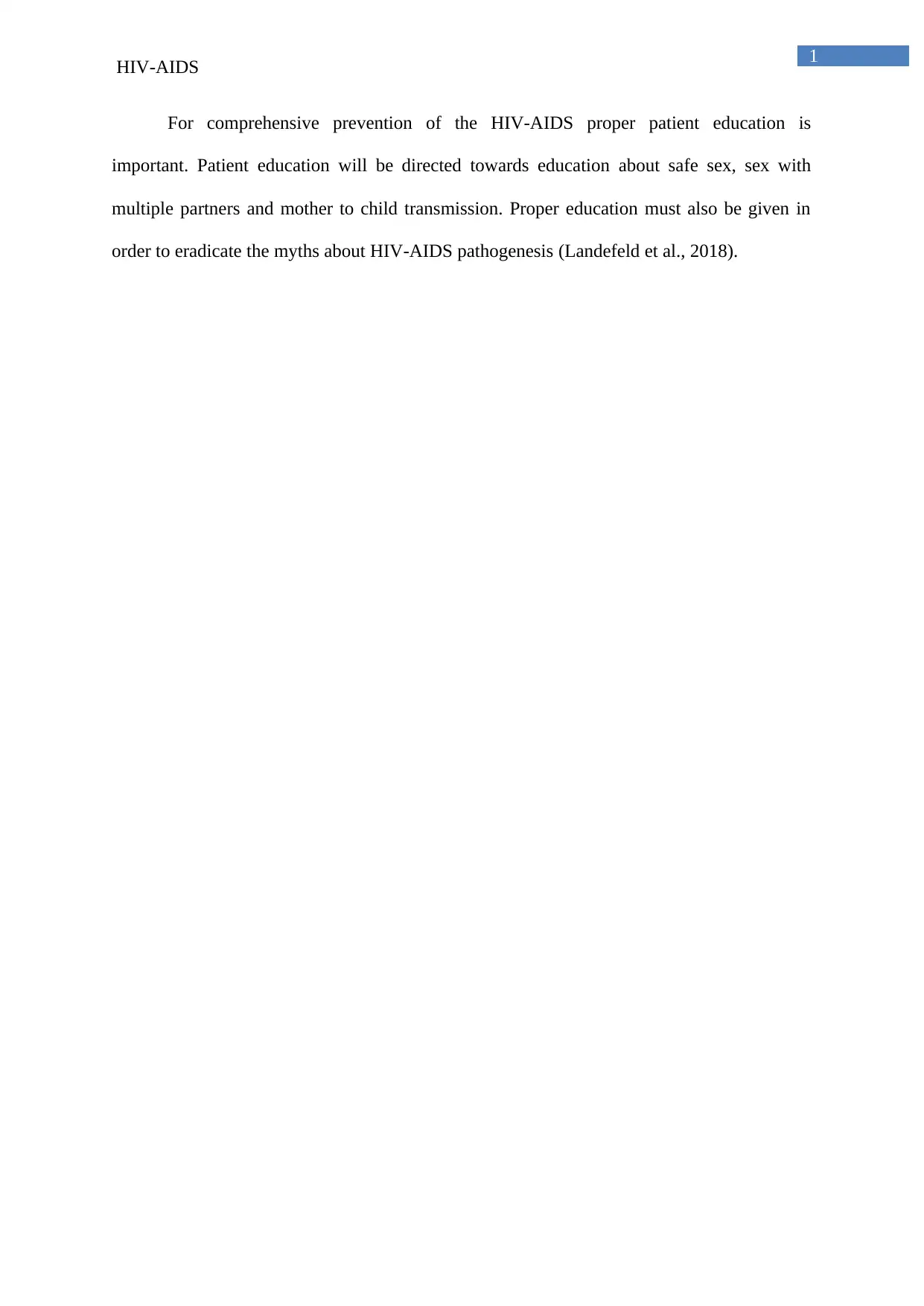NSC2500: HIV-AIDS Abstract Exploring Pathophysiology and Pharmacology
VerifiedAdded on 2023/01/18
|3
|646
|41
Report
AI Summary
This assignment presents an abstract on HIV-AIDS, detailing the disease's nature as caused by an RNA virus targeting helper T-cells, leading to immune deficiency. It discusses the role of antiretroviral drugs, particularly Zidovudine (ZDV), and their mechanism of action, along with associated side effects like hepatic toxicity and mitochondrial damage. The abstract emphasizes the importance of patient education for prevention and references relevant studies. The assignment is based on the NSC2500 course, focusing on understanding the pathophysiology of a disease and the pharmacology used to address it, aiming to improve knowledge of homeostasis, drug therapies, and communication skills.
1 out of 3





![[object Object]](/_next/static/media/star-bottom.7253800d.svg)